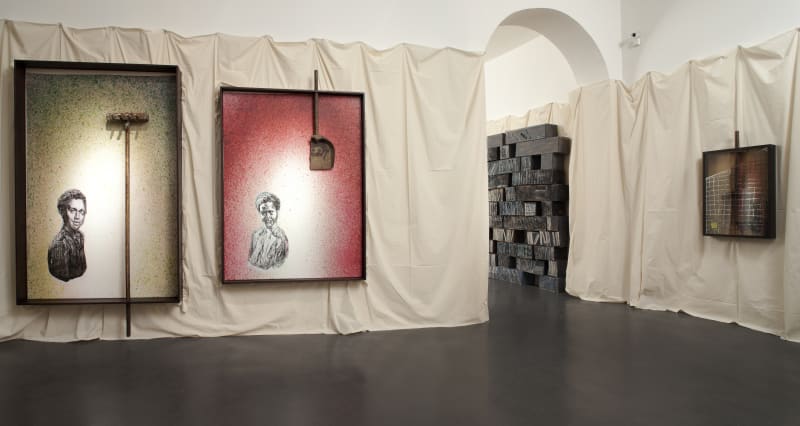Born in 1972 in Los Angeles, where he lives and works today, Edgar Arceneaux constructs drawings, installations, video and film works as complex arrangements of association that examine adjacencies and points of contact between implausible relations. He uses these techniques to tackle a broad range of subjects from epistemology, cosmology, and science to censorship, historical revisionism, social justice, and post-industrial cities. Arceneaux has created a large and hugely significant body of work that explores the interdependent relations between art and the social space.
Semi-biographical, Cockeyed Eddie explores the trajectory of this American artist through his complex family history. This scope of the exhibition, completely new in the artist's work, is to explore the links of the individual through the family to the mysteries of the social body in an infinitely personal manner.
In the gallery, Edgar Arceneaux will present a set of glass volumes and sculptures, silkscreens drawings and paintings on paper and muslin - The Arceneaux Genealogical Faction Series - as well as a set of some 25 works on Plexiglas and mirrors. Seeing his works with "double vision", he examines their conflicting perspectives and presents his individual works as fragments of stories. The relics and documents he presents play with the perception of the viewer, who is asked to experiment with the complexity of forgetfulness and memory both individually and collectively, at the same time that the artifacts confront us with our own imperfections. Triggered by the presence or absence of the viewer, Edgar Arceneaux's works make reference to the writings of critic John Berger by reminding us that vision has a reciprocal (two-way) nature.
The medical term for the optical deficiency that Edgar Arceneaux suffered as a child is dipoplia - double vision, the central trope of this exhibition. This condition entails the simultaneous dual perception of a single object, creating two images that can shift horizontally, vertically or diagonally. This duplicity of representation is visually interesting insofar as the two images - though unaligned - do not have exact contours. In diplopia, when an attempt is made to focus on the outline of an object, this shifts away from the gaze and becomes blurred in the surrounding world.
Genetic in origin, this dysfunction is hereditary and can be traced way back in Arceneaux's line of descent. In Cockeyed Eddie genealogy and heredity is used as formally as variation on a form. Of French ancestry, his forefathers were banned from Canada and entered the United States through Louisiana in 1765. The Arceneaux brothers were also some of the first French-Canadians to own slaves. Building on the project Drawings of Removal, begun in 1999, Edgar Arceneaux had traced his French origins to Beaumont, Texas, during an initial trip with his father.
With time, Edgar Arceneaux has become aware that the visual impairment he suffers had a profound effect on his interests, in philosophy and his conceptual thinking in particular. In presenting works that reflect this double vision - in Plexiglas, non-deforming mirrors and glass sculptures - Edgar Arceneaux tightens the bond that implicates the viewer in their contemplation, as they are in some way an incarnation of his own body. Veritable windows, they allow us a glimpse of the disjointed and fragmented reality of the gallery, and to catch the cacophonic echo of the themes and histories presented in the other works in the exhibition, at the same time as those from a stable environment.

